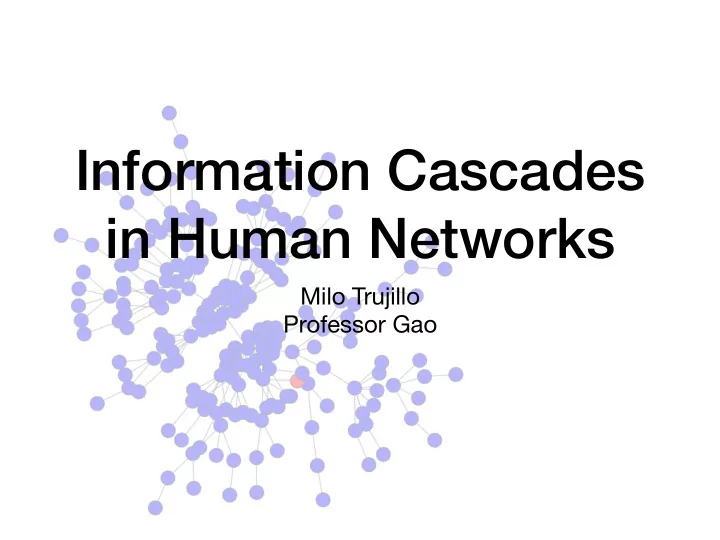

Information Cascades in Human Networks Milo Trujillo Professor Gao
Information Cascades • Generalization of Infection Modeling • Infection based on % threshold of neighbors • Agent-Based model to examine heterogeneous networks • Discrete timesteps
Variable Activation Thresholds • “A Simple Model of Global Cascades on Random Networks” ~ Duncan J. Watts, PNAS 2002
Variable Activity Times • “Di ff usion in Networks and the Virtue of Burstiness”, M. Akbarpour, M. O. Jackson, PNAS 2018 • Poisson, Reversing, and Sticky Agents
Starting Goal • Combine heterogeneous activation thresholds and activity times • Apply to scale-free networks • Examine resilience to targeted vs random attacks • How do you best spread or halt a cascade in human communities?
Model • Random or Scale-Free networks • One initial agent infected • Contagious for 10 turns • Spreads to all possible neighbors each turn • No “recovery” • Simulation ends when no agents contagious
First Study
Activity Comparison
Activity Comparison
Activity Comparison
Larger Scale Study
First Study Conclusions • Scale Free Networks generally safer • Hubs act as gatekeepers, quarantine cascades • If a hub is susceptible, can easily spread cascade • Activity synchronization threatens communities
Second Study
Second Study
Second Study
Second Study Conclusions • Targeted attacks most e ff ective in scale-free networks with mid-level susceptibility to cascades • At high and low susceptibility, minimal di ff erence from random attack unless very centralized
Future Work • Change Fixed Topology • Mix Types of Activity Patterns • Assortative versus Disassortative Communities
Recommend
More recommend